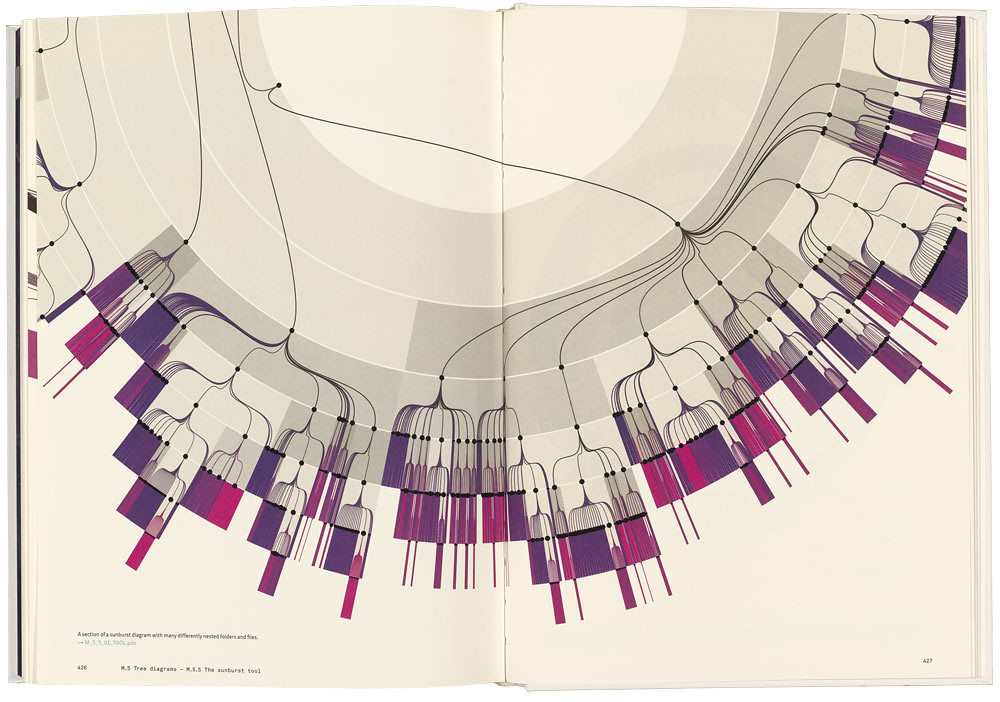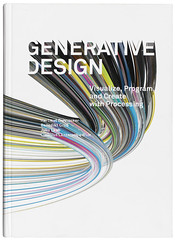Spring 2013
Source code for a design revolution
Generative Design: Visualize, Program, and Create with Processing
By Hartmut Bohnacker, Benedikt Gross, Julia Laub. Edited by Claudius Lazzeroni. Translated from the German by Marie Frohling. Princeton Architectural Press, £60 / $100.

Processing, an open-source programming language and environment for creating visualisations, animation and interactive artwork, was introduced to Eye readers back in 2007. In ‘Grow Your Own’ (Eye 65) Luke Prowse explained that by bridging technical and artistic processes, the tool hugely expanded the creative possibilities for those more used to working within the comforting graphic user interfaces of Illustrator, InDesign and Photoshop. ‘Processing,’ he argued, ‘puts powerful tools back in the hands of designers.’
While not every designer has since abandoned Creative Suite for code, enough have become interested in the possibilities of programming for the sort of design explored by this book to have grown and matured. Generative design can be understood as the process of creating art from algorithms, an abstract process in which it is the designer’s job to establish the rules that automate the creation of individual strokes and shapes. Most generative design has an instantly recognisable aesthetic: vast fractals, tangles of computerised lines, colourful polygons shattering like broken glass, and cellular bodies that seem almost organic.
The book is designed both to serve as an overview of the subject and act as inspiration. Its first section showcases 35 works by artists, architects and designers. Many of these fall into that familiar aesthetic, but others caught my eye – in particular, ‘Extracts of Local Distance’ (2009), created by FELD in Berlin, a collage generator that explores the archive of an architectural photographer. Image-recognition algorithms analyse source images and determine their component shapes and vanishing points. Each image is digitally sliced and the pieces added to a giant pool of components, then rearranged within the geometry of a new abstract canvas.
It’s also interesting to see such intrinsically digital work stray into the physical world. For example, ‘10,000 Digital Paintings’ (2011), by the London-based practice FIELD, is a set of unique cover artworks produced for paper manufacturer G. F. Smith’s print brochure, (see Eye 80). Some practitioners here have used generative processes to create the designs for sculptural work, from Janne Kyttanen’s table lamps to Karsten Schmidt’s 3D-printed ‘Type and Form’ sculpture for the cover of Print magazine (August 2008).
To follow all that inspiration, Generative Design also provides a hands-on guide to its subject matter, introduced via Processing. First, there are some basic example programs that show how one might create algorithmic colour palettes, draw with type and manipulate images. Then things become more complex, with examples that combine and vary those basic techniques to create more sophisticated results. Code examples are printed alongside explanatory text and imagery, and an accompanying website – generative-gestaltung.de – hosts downloadable code and more resources.
Working through these programs (all ‘updated to Processing 2.0’) is probably not ideal for a complete newcomer to coding. Things can get tricky quite quickly, even in the ‘basic’ section. However, the examples here are of a high quality, and range from custom drawing tools to data visualisations – offering inspiration to anyone who is a little way along on the journey towards being a designer-programmer. Tweaking and remixing these examples is a great way to appreciate code’s almost limitless potential. And who wouldn’t want such powerful tools at their fingertips?
The cover image was generated using Cover.pde, part of a code package that can be downloaded from generative-gestaltung.de. Top: detail of a sunburst tree diagram from the ‘complex methods’ section.
Eye is the world’s most beautiful and collectable graphic design journal, published quarterly for professional designers, students and anyone interested in critical, informed writing about graphic design and visual culture. It is available from all good design bookshops and online at the Eye shop, where you can buy subscriptions, back issues and single copies of the latest issue. You can see what Eye 85 looks like at Eye before You Buy on Vimeo.


